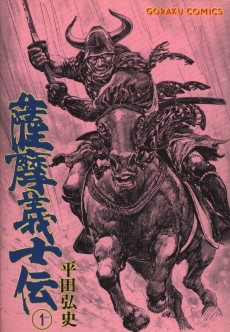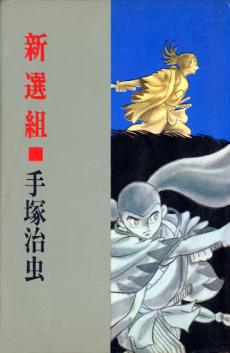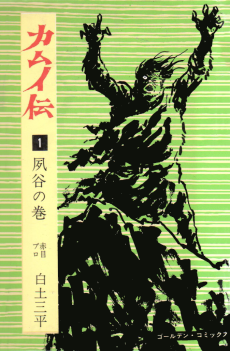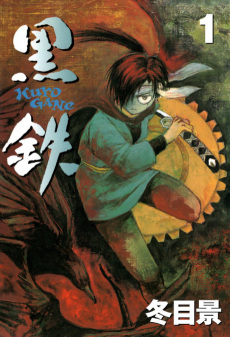AKAME
STATUS
COMPLETE
VOLUMES
2
RELEASE
Invalid Date
CHAPTERS
2
DESCRIPTION
In medieval Japan, the feudal lord Nobuhira reigns as an authentic tyrant over his domain, carrying out all kinds of abuses on the peasants. He kills some for fun, to test the effectiveness of his sword blade and to generate a climate of terror that drives other farmers into blind obedience. These, increasingly reduced to starvation, are forced to pay higher and higher taxes in rice, extorted from them through coercive methods, the kidnapping of women or the taking of hostages but all their attempts to revolt are suffocated in blood in the bud.
One day, however, a crippled monk makes his appearance in those lands, who attributes those nefarious events to the curse of the venerable akame, who are actually very normal rabbits, the main food of the local population. The rabbits thus become the object of the veneration of the peasants, who invoke their protection, which however is not frowned upon by the feudal lord.
(Source: Hazard Edizioni, translated)
CHAPTERS
REVIEWS

Sebsus
100/100A normed revenge story on the surface, but a deeper dive reveals a vast scale of rich storytelling.Continue on AniListIntrodution
Because Akame's page count hardly graces the 200s, I decided to structure the review chronically, and spoiler-heavy. As I go through the timeline, I'll write about my interpretations and themes that occurred. The Conclusion will sum up my thoughts and will stay spoiler-free. If you haven't or plan to read Akame, just read the conclusion.The Review Ignore the headlines, until you've read the Spoiler
It was written in the early days of manga, 1960s, at the start of a time heavily based on medieval Japan. Akame's approach is rather unique. Firstly, starting with an overview of disastrous raids happening in a village, jumping from violence to violence until finally settling on our protagonist Matsuzou. Who sets on his journey for revenge on a pregnant woman, his wife. Thus starting a second arc with more thematical storytelling. It starts with his decision to become a ninja, and after training for a few years, he finally tries himself on the first test but fails. His talent just wasn't enough. A profound lesson for us readers;
Each man is endowed with different gifts. Without them, no degree of effort will suffice to make him what he is not. - A wise man.
Not an uncommon message in fiction, but the poetic dialogue gives it the necessary touch to utilize its importance in the tale and sophisticate fine writing. He nearly dies, after getting punished by his master. This near-death experience is the trigger for an ambitious plan. The thematic arc continues with the surviving character patiently plotting his revenge in the background of the events.
Religion His first act into the main story string kicks off when the momentum is right - the raiders are burning a mere peasant. The man's son, a young boy, seeks the path of revenge but gets stopped by our protagonist, aging into an elder. He wins his first follower. His second act begins at the peak of violence - the villagers kill their relatives, as they get no chance to resist. Matsuzou teaches them Akameism as a device to develop hope, clear anger, and a reason to survive. His methods for the sake of a realistic portrayal of the new teaching aren't pacifistic and moral, using dead humans and curses that don't exist. Vile, but effective. Akame is a rabbit species. White and beautiful. In Akameism's narrative, they are like god. The teachings are artificial and solely a driving force for Matsuzou's plot. However, the main character's intelligence and unique sense of justice can still be interpreted through other actions. Like the symbol for Akameism getting killed by humans without having a trace of darkness in him. Matsuzou tells the villagers that all of the mayhem only happened as a natural law. And their violence against the rabbits is the trigger. From this moment onward all inhabitants follow his teachings. The author throws an argument between the climax and the currently-mentioned events, arguing that religion might be absurd for an outsider, but for members, it's an easy method to keep pace with society. On the contrary, like in Akame, the purpose of the movement might differ between the followers and the creators. The manipulative effect is strong enough to blindly order followers around. The importance of religion in Akame can't be overlooked. The writer's vivid arguments and huge coverage of the topic make it a compelling take.
Law of Nature As the storyline continues the effect of Akameism on the people grows, but due to their efforts, the rabbit population grows until this tendency gets noticed by carnivores. Their amount grew as well and steadily overpopulation developed. The Akame began to die out because of diseases that spread out after the rabbits ate anything because nothing was left. Soon the carnivores, especially lynxes, had nothing to eat either. The plan reached its final stage. Everything thus far is intentional. The lynxes starved, and the same fate occurred - they began to eat anything. Because they can only eat meat, Matsuzou feeds them a human corpse. Their fondness for mankind's flesh grew until they began to attack the raider's people, who were still horrifying the villager's life. One day the princess of the Feudal Lord, their leader, was nearly killed by the lynxes. The Feudal Lord swore revenge but was unable to kill the beasts.
The Importance of Being Patient The villagers seek help from the Feudal Lord and receive a compromise that gives them weapons, but they have to kill the lynxes. They take the opportunity; after acquiring the guns, they execute a small fraction of the raider's army. Following that, their morale gets boosted into the eternal, and after a few provoking words from Matsuzou, their revenge raid starts. They kill everyone and raid everything until, finally, only the Feudal Lord, Nobuhira, his wife's killer, is the only one remaining. Matsuzou ends Nobuhira's barbarous life with a passion and grudge only a monster possesses. After 30 years his revenge was finally successful. The shock is big, his only purpose in life faded away. He is possessed by his great plotting, and can't think rationally anymore. On the last panel, he goes into the eternal, laughing like a psychopath. This is what obsession is capable of doing. This concludes the story, but not my review. The last point I'll make is about the last theme found. And it's the essence of patience. The development of Matsuzou's plot took a long time and he delayed the actions until the best moment. Without that, he wouldn't be able to shift the situation in the right direction. Perfection was also a factor at the time.
The headlines represent the themes of Matsuzou's plan.
Conclusion
In my opinion, Akame's quality is raised tremendously by a deeper look behind the surface. Its complex theming is only a mere reason for that. It also opens a new perspective on the genius of Matsuzou, through the concealing writing. That hides his plan's quality behind text boxes, which seem like an unnecessary thought. The psychology behind his persona is not that cached, but nonetheless satisfactory. The only notable cast member, but he, fortunately, received enough love to seal Akame's fine character writing.(In my rating system it is a 3/5, but it can't be compared to the 100 metric system, so I'll just give it a 100, indicating general positivity)
SIMILAR MANGAS YOU MAY LIKE
 MANGA ActionHenshin Ninja Arashi
MANGA ActionHenshin Ninja Arashi MANGA ActionKubidai Hikiukenin
MANGA ActionKubidai Hikiukenin MANGA ActionSatsuma Gishiden
MANGA ActionSatsuma Gishiden MANGA ActionShinsengumi
MANGA ActionShinsengumi MANGA ActionNomi no Ou
MANGA ActionNomi no Ou MANGA ActionDaisan no Kagemusha
MANGA ActionDaisan no Kagemusha
SCORE
- (3.15/5)
MORE INFO
Ended inInvalid Date
Favorited by 9 Users





